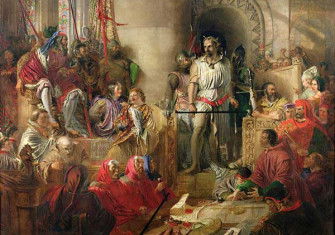Scottish Independence: The Medieval Roots of the Thistle
At what point did the Scots first see themselves as a distinct kingdom separate but equal to that of England? Scottish sovereignty and independence have medieval origins.

By the time Edward I invaded Scotland in 1296 and started the Wars of Independence Scots already regarded their country as a sovereign kingdom. You might imagine that this is what they had always thought in the Middle Ages and that Scottish independence began at whatever date this aspiration was first achieved. That is not the case. Scottish sovereignty, and the Scots’ belief that their country was of equal status with England, was a relatively recent idea in the 1290s. If we want to trace the beginning of Scotland as a fully independent kingdom, we should ask at what point did the Scots first start to see their king as on a par with any other king and why?







